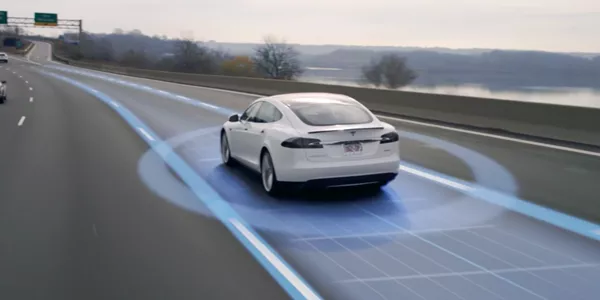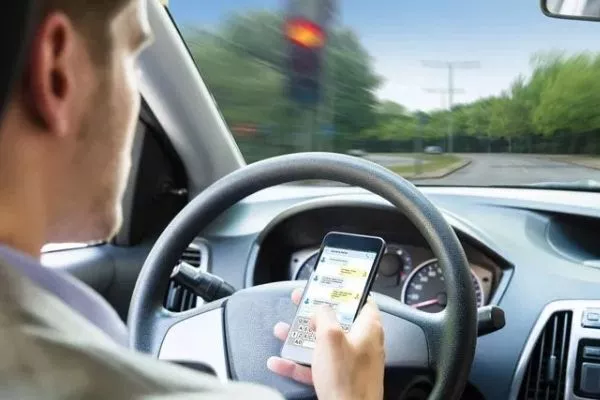Cars are becoming more and more high-tech and I hate it
When it comes to my ideal car, I don't ask for much: rear-wheel drive with a manual transmission, temperature gauge, speedometer, fuel gauge, tachometer, airconditioning, and a 2-DIN head unit with six speakers and AUX input.
A limited-slip differential would be nice to have, but we’re talking about attainable (and affordable) everyday cars here after all.

In my book, the Avanza fits the bill...for now.
I do acknowledge that certain tech accessories are essential, such as dashcams and reverse cameras. Heck, I wouldn't even mind the odd USB port. Moving up the tech ladder, more sophisticated features like traction control, collision detection and 360-degree view cameras would probably leave me unimpressed.
You might be wondering why I don’t like electronic driving nannies. Well, there are a couple of reasons.
>>> Check out: [Opinion] "Pare, san na ang electric car ko?"
Too much safety tech makes for bad drivers
The Yerkes-Dodson Law (named after psychologists Robert Yerkes and John Dodson) is defined as the empirical relationship between performance and arousal.
In layman's terms, when you give people too little to pay attention to, people will become too complacent. When they are given too much, they become overwhelmed. The middle ground, or the right amount of sensory input, is the ideal situation.

"I can snooze in a Tesla. I win!" is probably what many people are thinking
>>> Read more: [Philkotse collection] Design features unique to specific car brands
In the context of cars and driving, this means that a driver is at his or her best when giving full attention to the road and everything on it.
This is important because cars are increasingly being given advanced technologies like automatic braking, driver alert systems, self-parking and autonomous driving capabilities.
In short, there's less incentive for us to be attentive during our drives.
Warning systems tell us if we’re about to drift away from our lanes or approaching a hazard. There’s adaptive cruise control that automatically slows the car’s speed when it senses that we're about to rear-end the car in front of us.

A driver is at his or her best when giving full attention to the road and everything on it
There’s automatic braking that brings the car to a stop once the sensors detect a jaywalking pedestrian.
While all these features were certainly borne out of the best of intentions, there are situations where these very same technologies can actually endanger both driver and passenger.
Texting, calling or even chatting away with someone on the front passenger seat while driving has become more convenient, for example; this is especially true with younger people (zoomers) who have a penchant for multi-tasking behind the wheel. OH THE HUMANITY!

This time, even Jesus won't take the wheel; He'll probably scold you, too.
According to Stanford University's Clifford Nass, creator of The Media Equation theory and an authority on human-computer interaction:
“People are always happy to be lazy. So if you give people the slightest opportunity to be lazy, then they’ll take to it with great gusto and joy.”
Unfortunately, this applies to many Filipinos, whether it pertains to driving or other things; just visit any government agency and you’ll quickly see that “innovation” and “thinking outside the box” are rarely practiced.
>>> Also check:
- 5 reasons why people should embrace self-driving cars.
- Smart driving: Components of self-driving cars that allow self-navigation.
More tech means more things that’ll break
According to the American Automobile Association or the AAA, luxurious new cars equipped with gadgets and gizmos, including high-tech safety equipment, spend more time in the shop than less fancy models.

Boomers and car enthusiasts will likely blurt out, “Remember when cars were good?”
If you don’t believe me, look at the average used prices of luxury sedans on our Cars For Sale section and compare those to used SUV prices of the same year. Take note of their depreciation rate.
Worse, the average car enthusiast who typically knows how to do oil changes and other basic car fixes won’t be able to do something about a broken adaptive cruise control system, because that requires a factory scan tool and the car’s proprietary software to be able to perform self-tests.

"I'm a mechanic, not a programmer, dammit!"
Further compounding the problem is that most replacement parts for complicated high-tech devices are only available through the dealers, which means they're not exactly cheap.
Despite technological advancements, cars are still dangerous
While advanced, high-tech safety systems might help in some cases, a car is still a one-ton (or so) moving machine capable of inflicting damage, injury or death, at the right speed.
A car traveling at a mere 30 km/h running over an oblivious pedestrian on the road will result in broken bones. A car traveling at 60 km/h colliding with another car traveling in the opposite direction at the same speed yields much more dramatic results.

A car traveling running over a pedestrian at 30 km/h will result in broken bones
>>> For your information: See what happens to the automotive industry after AI
A car crashing against a solid object like a wall, a tree, or an electric post at 100 km/h, is by far the worst; I quickly learned this when I worked as a green Rescue and First Aid Provider/Ambulance Driver back in the southern Philippines a couple of years ago.
The sight of crash victims writhing in pain while stuck in their mangled vehicles still haunts me.
Tests show most automatic braking systems don’t work with pedestrians
While many say autonomous cars, and things like automatic braking systems and driver warning systems will do away with scenarios like that, I am far from convinced.
These technologies, after all, are still relatively new and have a long way to go before they become perfect to the point of completely avoiding human deaths.
So for now, deploying these untested (and expensive) pieces of technology on mass production vehicles would be a HUGE mistake. For me, anyway.
What do you recommend then?
The alternative is simpler and cheaper: just be an attentive and well-practiced driver with an unshakeable concentration on the road. Besides, there are still plenty of cars available that provide a very involved driving experience and comfort, with adequate levels of safety.
I mean, just look at the midrange variants of modern cars, which I refer to as the “Goldilocks” models because they come with just the right amount of features for the price.
>>> Have you known best car features that are convenient but not really priorities?

Some variants of the Toyota Vios come with seven airbags, with little electronic driving assist gizmos
But if you’re a car enthusiast who goes HARD all the time, calm down and take that attitude off the streets and into the race track instead. And no, installing a roll cage on your daily driver after gutting it, isn't going to work.
This is C.G.B.M. for Philkotse.com.
Recent posts
- Best dash cam Philippines: 5 features to consider & 5 recommended products Aug 26, 2022
- More car features that best for old people and here's why! Feb 14, 2020
- Car features that will make you thankful this holiday season Jan 06, 2020
- 13 less popular car features that are found in cars yet vital Jan 26, 2021
- 9 essential car features that you need to know before taking the wheel Aug 16, 2022












